Gerry Dulac: Round 1 of the US Open produced unexpected leaders, unsurprising struggles for golf's best
Published in Golf
PITTSBURGH — The first round of the 125th U.S. Open produced more surprises than a 13th birthday party, from the top of the unlikely leaderboard right down to the target practice players were fearlessly taking at some of Oakmont’s notoriously difficult holes.
There was a hole-out eagle to wake up the morning crowd, the fourth double eagle in tournament history, and — here’s a twist — Scottie Scheffler made six bogeys. Honest.
J.J. Spaun, who hasn’t been heard from since his three-hole playoff loss to Rory McIlroy at the Players Championship, made it look easy with his first bogey-free round in a major championship. Thriston Lawrence of South Africa, who has missed 10 of 12 cuts on the PGA Tour this season, made a tournament-best six birdies.
When it was all over Thursday, Spaun’s 4-under 66 sat atop the leaderboard, one shot clear of Lawrence (67) and two shots clear of another surprise: two-time U.S. Open champion Brooks Koepka, who has suddenly resurfaced from nowhere.
“It’s been a while,” Koepka said.
Koepka is one of three former U.S. Open champions ready to bring the heat after a day in which the top 14 players in the world rankings failed to break par, including No. 1 Scheffler, who shot 73. It was Scheffler’s highest score in relation to par since the third round of the Genesis Invitational (76).
The others are two-time major champion Jon Rahm, one of five players at 69; and the calamitous Jordan Spieth, who made five birdies and still shot 70. You have to get to No. 15 Ben Griffin (69) to find a top-ranked player who bettered par-70.
“The greens just got challenging out there late in the day,” Scheffler said. “There's so much speed and so much pitch, and then with the amount of guys going through on these greens, they can get a little bit bumpy. But you know that's going to be part of the challenge going in. You've got to do your best to stay under the hole and stay patient.”
That’s what Koepka did, making birdies at the final two holes to shoot 68 and put himself back on a major-championship leaderboard. In his past 10 majors since joining LIV Golf, he has missed two cuts and never finished better than 17th.
“I mean, it's the U.S. Open,” Koepka said. “You know it's going to firm up. It's still not as firm as a typical U.S. Open probably is. I mean, I understand there was rain on Sunday night, so I get it, but it's still — it's going to have some heat to it this weekend. It will be a good test.”
Defending champion Bryson DeChambeau said Oakmont was “brutal” after he shot 73. World No. 2 Rory McIlroy shot 41 on his second nine en route to a 74 that included a double bogey at the 276-yard par-3 eighth hole. And Shane Lowry shot 79 even though he dunked his second shot for eagle at the par-4 third.
“I think the rough is incredibly penalizing,” DeChambeau said. “Even for a guy like me, I can't get out of it some of the times, depending on the lie. It was tough. It was a brutal test of golf.”
When last anyone saw Spaun, he was taking McIlroy to a three-hole playoff three months ago at the Players Championship. But there he was at Oakmont, closing with 10 consecutive pars for his first bogey-free round in a major. In Spaun’s only other U.S. Open appearance, he missed the cut in 2021.
Spaun hit only eight fairways and 12 greens in regulation, but he did not give a shot back to par after he chipped in for birdie at No. 10, his first hole, to start the round.
Just as surprising was Lawrence, who has missed the cut in 10 of 12 starts this season on the PGA Tour, including the past six. But there he was, leading all players with six birdies, including three on the back nine after a double-bogey at the par-4 ninth.
“I just told J.J., incredible round, nice playing — good luck the rest of the way,” said world No. 3 Xander Schauffele, who shot 72.
Schauffele meant that as words of encouragement, but it also could have served as a presumptive warning.
At the end of the day, only 10 players were under par and just two holes played under par: The 621-yard fourth, where former Masters champion Patrick Reed had the fourth double eagle in U.S. Open history; and the driveable 327-yard 17th, even though it produced only one eagle.
Conversely, players were taking target practice at the two toughest holes in 2016 — Nos. 1 and 10, a pair of downhill par-4s with greens that run toward the Pennsylvania Turnpike. The first hole ranked as the seventh easiest, even yielding an early-morning hole-out eagle by former Ohio State player Maxwell Moldovan. And the 10th ranked as only the eighth toughest.
“This golf course is hard, I don’t care what anyone else says,” said Reed, who made triple bogey at the final hole to shoot 73. “It’s going to keep on getting firmer and faster. The fairways are just going to keep on getting firmer and faster, and because of that, it's going to be harder to hold it.”
©2025 PG Publishing Co. Visit at post-gazette.com. Distributed by Tribune Content Agency, LLC.
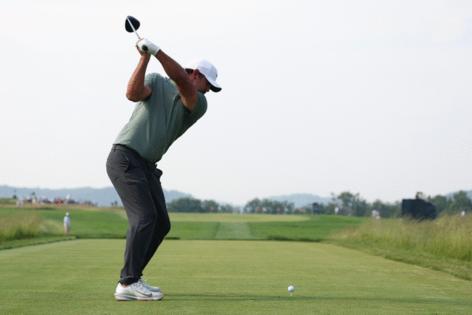

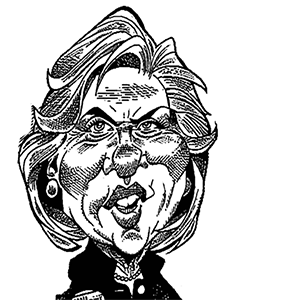
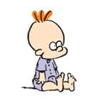
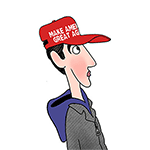
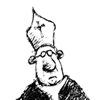

Comments